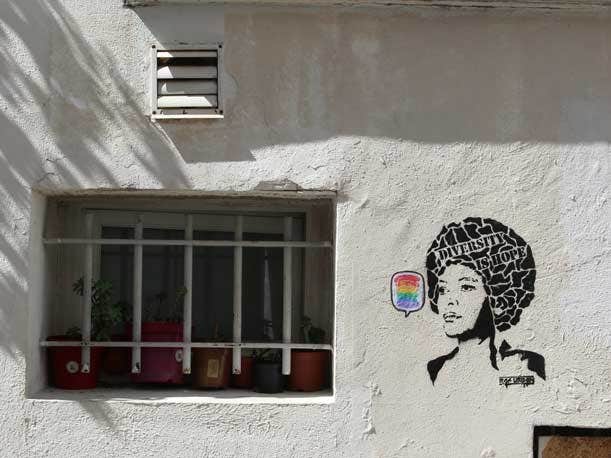Building Understanding: The Language To Define Equity And Inclusion
Let us clear up some misconceptions on what DEI (Diversity, Equity, and Inclusion) is and is not.

Languages are a funny thing, aren’t they? And I don’t mean funny ha-ha, I mean funny interesting. To date, more than 7,000 languages are spoken worldwide, according to language education training company Berlitz. Language, words, and their definitions or meanings function as a mechanism of social connection, allowing us to connect, in the past, in the present, and hopefully, in the future. Slang, specifically in English, presents numerous examples of how language is ever-evolving, allowing us to draw in new words and phrases from generation to generation. Trust me, I only share big facts – no cap.
It is easy to assume that language is universal – that when we speak the same set of words, we share a clear, transferable understanding. But, if you click the definition link above, you’re familiar with the need for clear definitions that allow for a deeper, more complete contextual understanding of words and phrases.
Like all forms of language, words like diversity, equity, inclusion, or its acronym DEI, have changed over time. What it means to build organizational diversity once relied on race and gender differentiators. Now we look to neuro-inclusion, varying abilities and LGBTQIA+ inclusion to name a few.
DEI in Context: Finding Language
Unfortunately, some have co-opted DEI to mean “Didn’t Earn It,” relying solely on armchair analysis that leads to entirely false conclusions. Without diving into a longer sociological analysis of how the misinformed arrive at new interpretations of the DEI acronym, I would like to dispel myths around what the terms Diversity, Equity, Inclusion, Belonging mean in a business context.
For leaders who focus on future growth and expansion, it’s crucial to grasp the social definitions of important concepts like equity, inclusion, diversity, belonging, and justice. Doing so fosters cultures by intention rather than ones built by default. Leaders striving for inclusivity owe it to our colleagues and peers to understand our own motivations and the concrete implications of the actions we take.
So, just for you my gentle reader, I have compiled a list of key terms to assist in crafting language around diversity, equity, inclusion, and belonging. The combination of which leads to organizational justice.
This list is not comprehensive. As we know, definitions change as more information becomes available. Yet, our goal is to encourage the framing of the language of DEI fully and accurately. To construct a common understanding in the effort to build a connected and just future.
Diversity
- The practice or quality of including or involving people from a range of social and ethnic backgrounds, including genders, abilities, and sexual orientations.
- A unit of measure, not a state of being.
- Based on a McKinsey study, companies that have increased gender and racial diversity have higher profits, and better performance.
- We cannot have diversity for the sake of diversity only. It is a first step but requires more systemic understanding of how the diverse workforce will enhance and improve culture.
- It is not just the existence of diversity but its use to create inclusive cultures that is effective.
Equality
- Based on legal definitions, the state of being equal, especially in status, rights, and opportunities.
- Fairness i.e., free from bias and discrimination. What is done for one group is and should be done for all.
- The act of removing discrimination and replacing it with sameness or treatment that is universal.
Equity
- The quality of being fair and impartial.
- Equity recognizes that needs are different based on history. It acknowledges difference in experience and access. Attempts to correct the disadvantages experienced by various minorities.
- Equity is based on what people need to succeed and what organizations need to achieve equality.
- Equity is a prerequisite to equality.
- “An equity-first mindset leads to equality for all” – Mary Frances Winters
- It is about correcting systems and removing barriers of differential treatment.
- We know we achieve equity when we can no longer predict outcomes based on one’s identity.
Inclusion
- Practices and/or policies that provide equal access to resources and opportunities to under-resourced and marginalized.
- Action is required.
- It is the set of actions taken by a person or organization or community to ensure each member gets the same opportunities for success as everyone else.
- It’s found in organizational policies, practices (cultural or institutional), procedures.
Belonging
- An affinity for a situation, place, or group.
- It’s the goal. It’s the diversity, equity, inclusion brought together to create a space where all belong.
- It’s not the elimination of difference for the sake of sameness, it’s the celebration of difference, and removal of institutional barriers that result in unequal access to opportunities.
- Requires trust, a shared sense of purpose and goals, transparency, psychological safety.
- Vernā Myers, VP of Inclusion Strategy at Netflix quote: “Diversity is being invited to the party. Inclusion is being asked to dance.”
- Dereca Blackmon says it this way: diversity is being invited to the party. Inclusion is being asked to dance. Belonging is dancing however you want, and equity is picking the DJ.
In putting Diversity, Equity, Inclusion, and Belonging together the goal is to build a DEIB framework that leads to justice. Justice has several layers philosophically. It is not only an act or a behavior but the quality of moral equitableness. And, while these are big questions with global implications, acting locally and internationally within our organizations can only assist in building a world where justice thrives.
(photo via Lucie Hošová on Unsplash)